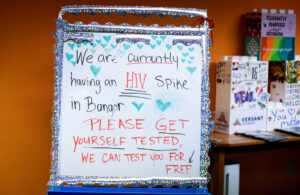
October brings a dual focus on Halloween festivities and breast cancer awareness, a juxtaposition that highlights both the playful and the serious aspects of this month. While many engage in Halloween traditions filled with fun and fright, it is also a time when communities rally around a cause that affects millions: breast cancer.
The month is marked by an abundance of pink ribbons, symbolizing solidarity with those battling this disease. According to the World Health Organization, breast cancer is the most common cancer among women globally, with an estimated 2.3 million new cases diagnosed in 2020. This staggering figure underscores the urgency of awareness and education.
Understanding the Impact of Breast Cancer
Receiving a diagnosis of breast cancer is a life-altering event. It can evoke feelings of fear and uncertainty, which starkly contrasts with the lightheartedness associated with Halloween. For those who hear the words “You have breast cancer,” the reality is anything but festive.
The medical community stresses the importance of early detection, which can significantly improve survival rates. The American Cancer Society reports that when detected early, the five-year survival rate for localized breast cancer is approximately 99%. This statistic emphasizes the critical need for regular screenings and self-examinations.
Support groups and health organizations play a vital role in providing resources and emotional support to patients and their families. These groups often organize fundraising events throughout October, raising awareness and funds for research. For instance, organizations like Susan G. Komen and Breast Cancer Research Foundation actively engage communities to foster understanding and support for those affected.
The Role of Community and Awareness Campaigns
In communities worldwide, local events during October serve to bring people together in the fight against breast cancer. From charity walks to educational seminars, these initiatives aim to inform the public about prevention and treatment options.
Moreover, the focus on breast cancer awareness extends beyond mere fundraising. It encompasses a broader initiative to foster open discussions about the disease, reduce stigma, and promote a culture of health. Survivors often share their stories during these events, offering hope and encouragement to those currently facing similar challenges.
In many regions, businesses also participate by selling pink-themed products, with proceeds often directed toward breast cancer research and support services. This collaborative effort between individuals, organizations, and businesses highlights the collective commitment to combating the disease.
As the month progresses, it serves as a poignant reminder that while Halloween brings temporary thrills, the realities of breast cancer are profound and enduring. The stories of survivors and the ongoing fight against this disease continue beyond October, reinforcing the need for vigilance and compassion throughout the year.
In conclusion, while October may be filled with ghosts and ghouls, it is also a time for serious reflection on breast cancer. The stark contrast between seasonal festivities and the harsh truths of the disease calls for a unified effort in raising awareness, supporting those affected, and ultimately striving for a cure.






